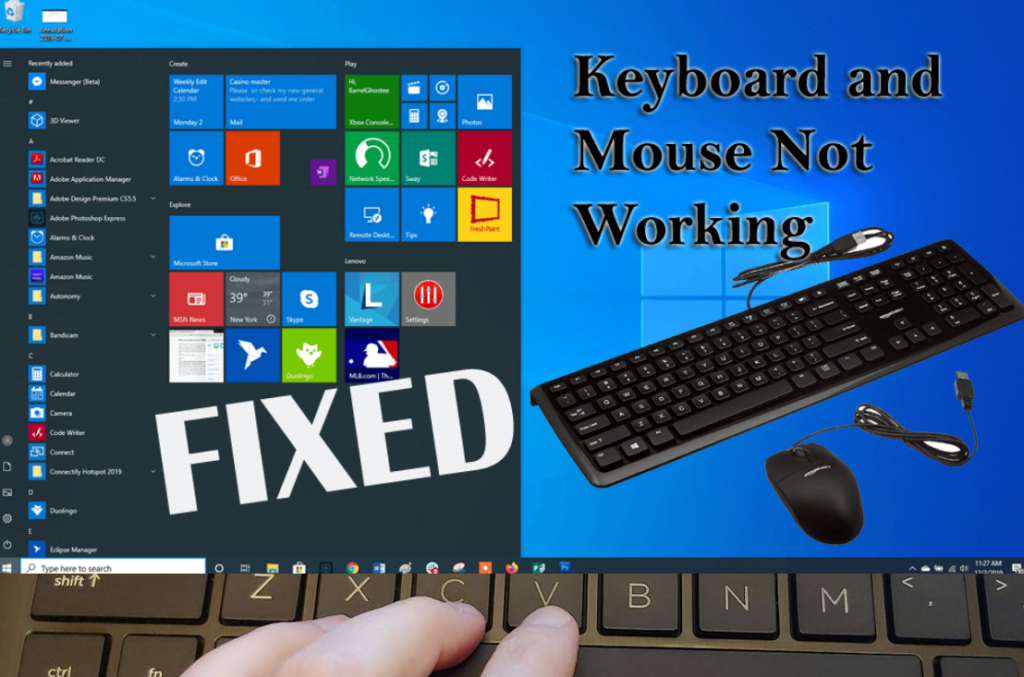Navigating Windows 10 Woes: A Comprehensive Guide to Fixing Mouse or Keyboard Issues

Introduction: The mouse and keyboard are the primary interfaces between a user and their Windows 10 computer. When these essential peripherals stop working, it can be a source of frustration and hinder productivity. This comprehensive guide aims to empower users by providing an extensive overview of common issues related to mouse or keyboard malfunctions in Windows 10 and step-by-step solutions to address them. Whether you’re facing unresponsive buttons, erratic cursor movements, or a completely non-functional input device, this guide will help you troubleshoot and resolve the issues effectively.
Section 1: Identifying Common Mouse and Keyboard Issues in Windows 10 1.1 Unresponsive Buttons: Understand the potential causes of unresponsive buttons on your mouse or keyboard, ranging from hardware malfunctions to driver issues. 1.2 Erratic Cursor Movements: Explore the reasons behind erratic cursor movements, such as interference, driver conflicts, or calibration problems. 1.3 No Input Response: Investigate scenarios where the mouse or keyboard is entirely unresponsive, and learn about possible causes like USB port issues or driver failures.
Section 2: Basic Checks and Preliminary Troubleshooting 2.1 Hardware Connections: Ensure that your mouse and keyboard are securely connected to the appropriate USB ports or via Bluetooth, checking for loose cables or faulty connections. 2.2 USB Port Changes: Try connecting your peripherals to different USB ports to rule out issues with specific ports on your computer. 2.3 Battery Status: For wireless devices, check the battery status to ensure they have sufficient power for proper functionality.
Section 3: Device Manager and Driver Issues 3.1 Device Manager Inspection: Navigate to the Device Manager to identify any issues with the mouse or keyboard drivers, indicated by warning symbols or error messages. 3.2 Driver Updates: Update or reinstall mouse and keyboard drivers to ensure compatibility with Windows 10 and resolve potential conflicts.
Section 4: Windows Settings and Calibration 4.1 Mouse Settings: Adjust mouse settings in the Windows Control Panel, including pointer speed, button configuration, and wheel settings to customize your experience. 4.2 Calibration Tools: Use built-in calibration tools in Windows 10 to optimize mouse or touchpad movements for better accuracy.
Section 5: Troubleshooting Specific Mouse Issues 5.1 Wireless Mouse: Address common issues with wireless mice, such as connectivity problems, interference, or Bluetooth pairing challenges. 5.2 Touchpad Troubles: Troubleshoot touchpad-related problems on laptops, including gestures, sensitivity, and responsiveness issues.
Section 6: Fixing Keyboard-Related Problems 6.1 Sticky Keys and Filter Keys: Disable or configure accessibility features like Sticky Keys and Filter Keys that might impact keyboard functionality. 6.2 Ghosting and Key Rollover: Understand and troubleshoot issues related to key ghosting or rollover, where certain key combinations may not register correctly.
Section 7: System Restore and Recovery Options 7.1 System Restore Points: Consider using System Restore to revert your system to a previous state when the mouse or keyboard was functioning correctly. 7.2 Safe Mode: Boot into Safe Mode to troubleshoot and identify whether third-party applications or drivers are causing input device issues.
Section 8: Advanced Troubleshooting and Professional Help 8.1 Registry Edits: Perform advanced troubleshooting by editing the Windows Registry to address persistent mouse or keyboard issues. 8.2 Professional Assistance: Consult with professional technicians or the device manufacturer’s support for in-depth troubleshooting and hardware diagnostics.
Conclusion: Dealing with mouse or keyboard issues in Windows 10 can be challenging, but with a systematic approach, users can overcome these challenges and restore normal functionality to their input devices. By identifying common problems, implementing troubleshooting techniques, and considering advanced solutions when necessary, you empower yourself to navigate the intricacies of Windows 10 and ensure a smooth and efficient computing experience. Remember, a well-functioning mouse and keyboard are integral to your interaction with the digital world, and resolving issues promptly contributes to a seamless computing experience on your Windows 10 device.




